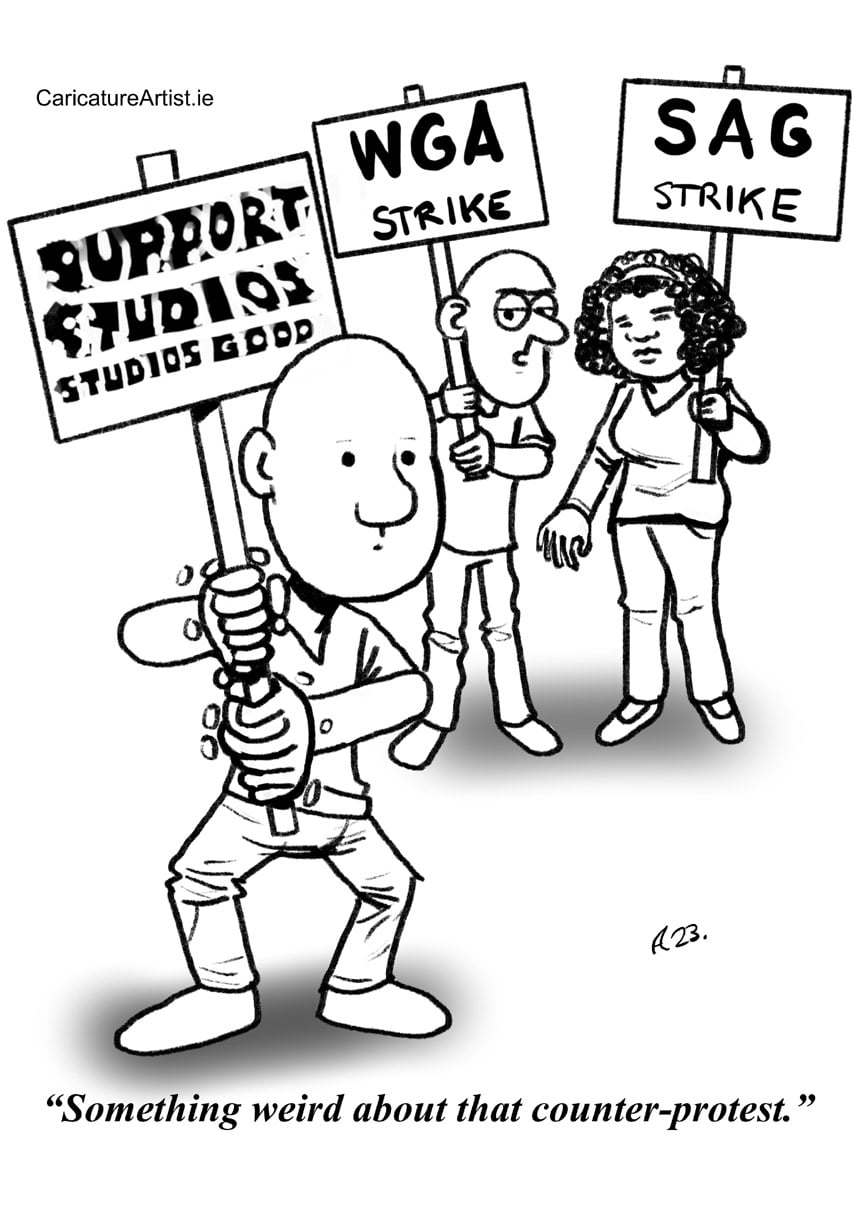WGA And SAG-AFTRA Strike: The Complete Hollywood Shutdown

Table of Contents
Key Demands of the WGA and SAG-AFTRA
The dual strike represents a unified front against systemic issues deeply impacting writers and actors. Their demands boil down to three key areas: fair compensation, AI safeguards, and improved working conditions.
Fair Wages and Residuals in the Streaming Era
The advent of streaming services has fundamentally reshaped the entertainment landscape, drastically altering compensation structures for writers and actors. Traditional models, built on residuals from syndication and DVD sales, have crumbled under the weight of streaming's subscription-based model.
- Demand for a fairer share of streaming profits: The current system often leaves writers and actors with minimal compensation despite the massive audiences and revenue generated by streaming platforms like Netflix, Disney+, and HBO Max. They are demanding a percentage of profits reflecting the true value of their contributions.
- Increased transparency in streaming viewership data: Accurate viewership data is crucial to determine fair compensation. The lack of transparency makes it difficult to negotiate equitable deals based on actual performance.
- Addressing the issue of "mini-rooms": These short-term writing assignments offer inadequate pay and benefits, leaving writers vulnerable and financially insecure. The unions are fighting for standardized pay and benefits across all writing engagements.
Protecting Writers and Actors from AI
The rapid advancements in artificial intelligence (AI) pose a significant threat to the livelihoods of writers and actors. The unions are pushing back against the potential displacement of human creativity.
- Demand for regulations to prevent the use of AI to create scripts or generate performances: The fear is that AI could be used to generate cheap, automated content, undermining the value of human talent and expertise.
- Negotiation for specific guidelines regarding AI usage in the creative process: The unions seek clear rules and regulations governing the ethical and responsible use of AI in the entertainment industry, ensuring human creativity remains central to the process.
- Ensuring that AI cannot be used to replace human creativity and talent: The core argument is that AI should be a tool to assist, not replace, human artists.
Improved Working Conditions
Beyond compensation, the strike addresses long-standing concerns about working conditions and job security.
- Demand for stricter limits on working hours: The grueling schedules and long hours prevalent in the industry contribute to burnout and compromise the quality of work.
- Improvements in health insurance and pension plans: The unions aim to secure better and more comprehensive benefits packages for their members.
- Safeguarding against the erosion of industry standards: The strike seeks to prevent a further decline in working conditions and protect the rights and dignity of all workers in the industry.
Impact of the Hollywood Strike
The Hollywood strike's impact reverberates far beyond the picket lines, causing significant disruptions and economic consequences.
Production Halts and Delays
The simultaneous walkout has brought countless film and television productions to a complete standstill.
- Major studio productions delayed indefinitely: Blockbuster movies and popular television series are facing significant production delays, resulting in potential release date postponements.
- Potential for significant financial losses for studios and production companies: The prolonged strike translates to massive financial losses for major studios and production companies.
- Ripple effects across related industries: Businesses reliant on film and television production, such as catering, transportation, and hospitality, are experiencing job losses and financial strain.
Economic Consequences
The economic fallout of the strike extends far beyond Hollywood's borders.
- Job losses for crew members and other industry workers: Thousands of crew members, technicians, and other support staff face unemployment due to the production halts.
- Negative impact on tourism and related businesses: Areas heavily reliant on film production as a significant economic driver experience decreased tourism and related revenue.
- Potential for long-term damage to the reputation of Hollywood: The prolonged conflict could damage Hollywood's image and its ability to attract talent and investment.
Public Perception and Support
The strike has surprisingly garnered significant public support, highlighting the plight of workers in the entertainment industry.
- Increased awareness of the disparity in wealth distribution within Hollywood: The strike has drawn attention to the vast income inequality within the industry, with a small percentage of executives and actors benefiting disproportionately.
- Solidarity actions from other labor unions: Other unions have expressed their support, demonstrating a growing awareness of the broader labor issues at play.
- Potential for long-term changes in how the entertainment industry operates: The strike could lead to meaningful changes in compensation models, working conditions, and the overall power dynamic within the industry.
Potential Resolutions and Future of the Hollywood Strike
Finding a resolution to this complex situation requires negotiation and compromise from all parties involved.
Negotiation and Compromise
Both the WGA and SAG-AFTRA, and the Alliance of Motion Picture and Television Producers (AMPTP), must engage in good-faith negotiations to find a mutually agreeable solution. Concessions from both sides will likely be necessary to reach a settlement.
Long-Term Implications for the Industry
The outcome of this strike will significantly reshape the future of filmmaking and television production. It could lead to new compensation models, improved working conditions, and a more equitable distribution of wealth within the industry.
The Role of Streaming Services
The relationship between streaming services and labor unions requires urgent re-evaluation. The current model, often perceived as exploitative by the unions, needs reform to ensure fair compensation and sustainable working conditions for writers and actors in the digital age.
Conclusion
The Hollywood strike, spearheaded by the WGA and SAG-AFTRA, represents a watershed moment in the entertainment industry. The fight for fair wages, improved working conditions, and protection against the disruptive impact of AI highlights the urgent need for reform. The strike's far-reaching economic consequences underscore the significance of this labor dispute. The resolution of this Hollywood strike will indelibly shape the future of entertainment. Stay informed on the latest developments in this ongoing Hollywood strike and its impact on your favorite shows and movies. Understanding the intricacies of this major labor action is essential for anyone interested in the future of the entertainment industry.

Featured Posts
-
 Multidao Dorme Nas Ruas Do Vaticano Em Homenagem Ao Papa Francisco
May 07, 2025
Multidao Dorme Nas Ruas Do Vaticano Em Homenagem Ao Papa Francisco
May 07, 2025 -
 Access To Birth Control The Over The Counter Revolution After Roe
May 07, 2025
Access To Birth Control The Over The Counter Revolution After Roe
May 07, 2025 -
 Jaky Shan Yhsl Ela Jayzt Injaz Alemr Fy Mhrjan Lwkarnw Alsynmayy
May 07, 2025
Jaky Shan Yhsl Ela Jayzt Injaz Alemr Fy Mhrjan Lwkarnw Alsynmayy
May 07, 2025 -
 Rihannas Third Pregnancy A Timeline Of Events
May 07, 2025
Rihannas Third Pregnancy A Timeline Of Events
May 07, 2025 -
 Beyond Boston Analyzing The Cavaliers Biggest Playoff Rivals
May 07, 2025
Beyond Boston Analyzing The Cavaliers Biggest Playoff Rivals
May 07, 2025
